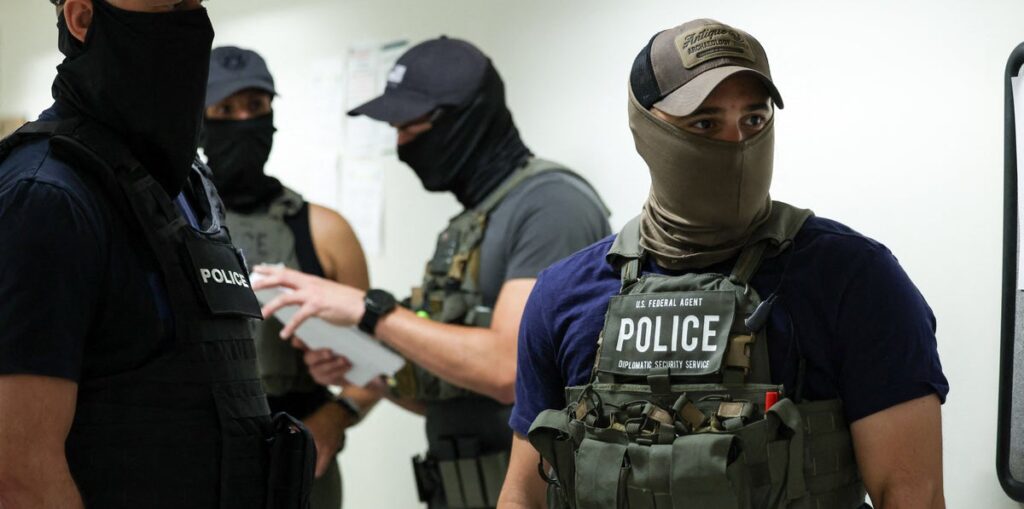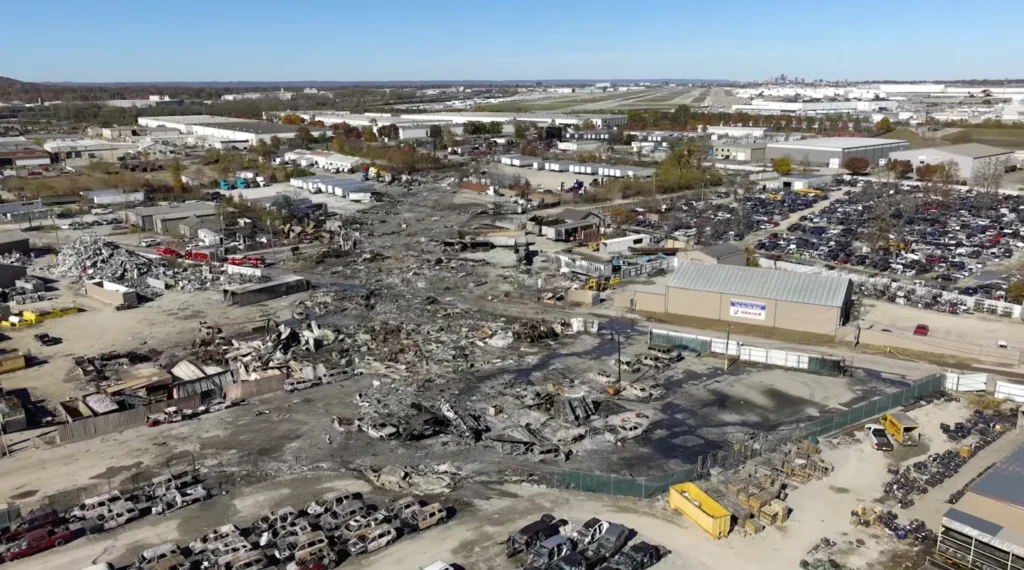‘Sensitive’ Memo Reveals How Many Border Agents Trump Is Enlisting In Immigration Raids

The Trump administration has diverted roughly 2,000 officers and agents from the country’s ports and borders so they can support immigration raids in U.S. cities, according to an internal homeland security memo viewed by HuffPost and labeled “sensitive.”
The shift in money and personnel reflects the White House’s desire to juice the number of deportations of people in the country without authorization ― even if it means sapping manpower normally devoted to countering terrorism and drug trafficking along the borders and at ports of entry.
The extra bodies have come from the U.S. Customs and Border Protection, or CBP, an agency within the Department of Homeland Security. CBP includes the U.S. Border Patrol and is a separate entity from U.S. Immigration and Customs Enforcement, the agency leading President Donald Trump’s immigration crackdown.
As of late June, CBP was lending out more than 1,100 of its 19,000 border patrol agents and more than 800 of its 26,000 port officers to ICE, according to the document.
CBP doesn’t normally take part in immigration enforcement away from the country’s ports and borders, at least on a large scale. The agency’s core responsibilities are to combat terrorism and transnational crime, safeguard the borders, and facilitate lawful travel and trade, but it is now taking part in what Trump has promised to be “the largest deportation program in American history.”
Gil Kerlikowske, who ran CBP under former President Barack Obama, said redirecting these resources could leave the country vulnerable at its ports and borders. Trump has made a big deal about fentanyl coming into the U.S. from other countries and even used the issue as a justification for his trade war.
“The ports of entry ― that’s where the fentanyl comes in,” Kerlikowske said. “If you’ve taken 800 agents off of the ports of entry, that can cause a significant problem.”
Kerlikowske also said he was worried about officers trained to work in ports and along borders suddenly taking part in urban operations and coming face to face with crowds. Armed border patrol agents swept through MacArthur Park in Los Angeles last month, prompting children to flee, according to local news reports.
“The shift in personnel reflects the White House’s desire to juice the number of deportations – even if it means sapping manpower normally devoted to countering terrorism and drug trafficking.”
“Their experience and training and expertise is on the border,” Kerlikowske said of border patrol agents. “Not policing and patrolling an urban area.”
Nearly 300 people from the border patrol’s special operations group were being deployed to support ICE operations, including “fugitive apprehensions, surveillance, operational planning, entry tactics and task force participation,” according to the document.
Most of the CBP personnel were being used in local ICE operations in Miami, New Orleans, Boston, Nashville, San Antonio, Houston, Seattle and other cities around the country. Nearly 200 were enlisted in what the document refers to as “Operation Los Angeles,” the series of immigration raids that set off mass protests in California last month.
The reporter of this story can be reached on Signal at davejamieson.99 or via email at dave.jamieson@huffpost.com.
Another 600 had been lent out for “Operation At Large,” the nationwide ICE plan to round up undocumented immigrants.
The agency was also providing 32 aircraft and 118 pilots and agents from its air-and-marine unit, which is responsible for interdicting drugs, weapons and other illicit cargo along the borders. Those personnel have been helping to move detainees from one facility to another as they await deportation. The unit only has around 1,800 agents and support staff.
The Department of Homeland Security did not respond to a request for comment Tuesday.

The Trump administration hopes to hire 10,000 more ICE agents over the next five years, but it could continue to siphon staff from the ports and borders due to the time it takes to hire.
The Republican-controlled Congress recently pumped billions of dollars of new funding into immigration enforcement, including it as part of their tax reform package known as the One Big Beautiful Bill Act. The legislation steers $45 billion toward immigration detention facilities and another $30 billion toward ICE enforcement.
But historically, it has taken about half a year to hire an officer to work on deportations. Even if the administration can cut that time down significantly, it still takes months to get new officers trained and onboarded.
In the meantime, Trump aides are eager to show the president they are doing whatever they can to further his deportation campaign. The CBP document boasts of the way the agency has diverted agents and officers away from their normal jobs so they can help with raids and detentions.
“The ports of entry – that’s where the fentanyl comes in. If you’ve taken 800 agents off of the ports of entry, that can cause a significant problem.”
– Gil Kerlikowske, former commissioner of CBP
The U.S. Border Patrol “has expended great resources and manpower to assist ICE to accomplish the presidential mandates that have been set,” the document states.
It notes that the loaner program has involved 25 field offices and come at a cost of $20 million as of late June.
Although immigration raids are most commonly associated with ICE, customs and border personnel have become a common sight at roundups in California and elsewhere. Masked border patrol agents were just seen making arrests in a Home Depot parking lot in Sacramento on Thursday, according to local news reports.
The administration has tried to hype the criminal backgrounds of those it’s arresting and deporting, but most appear to only have infractions for traffic or immigration offenses on their records. The clampdown on undocumented workers is growing increasingly unpopular among voters, according to surveys.
In a recent CNN poll, 55% of respondents said Trump had gone too far with his deportation campaign, 10 points higher than in February.
Kerlikowske predicted that the negative polling and any economic hit due to deportations could prompt the administration to pull back on its raids and shift resources back toward the ports and borders.
“You can probably guess that if they get some numbers they deem sufficient by the end of the year, this is all going to fade off,” he said.
: 156







